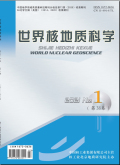国家预印本平台
中国首发,全球知晓
bstractPurposeThe intelligent transformation of university libraries is a necessary path to implement the national digital education transformation strategy and promote high-quality services in university libraries. As a core business, literature resource construction is constrained by complex internal and external factors, urgently requiring empirical research combined with data.MethodThis paper uses seven-year data related to literature resource construction in university libraries of Jiangsu Province to systematically analyze the positive changes and risk challenges brought by intelligent transformation.ConclusionTargeted countermeasures and suggestions are proposed, including strengthening intelligent strategic thinking, optimizing collaborative management frameworks, empowering resource construction scenarios with intelligence, constructing provincial characteristic construction models, and cultivating an open and collaborative intelligent ecosystem.
Facing the "15th Five Year Plan" and future development, public libraries should focus on solving three problems in combination with national strategic needs and their own characteristics: continuously strengthening the basic business construction of libraries, further attaching importance to innovative development design of libraries, and continuously strengthening the training of librarians abilities, so as to achieve high-quality development of public libraries during the "15th Five Year Plan" and future.
BackgroundHeart failureHF is a major chronic condition that significantly impacts global health. Coronary heart diseaseCHD is the leading cause of HF. Developing risk prediction models for HF in patients with CHD is crucial for enabling healthcare professionals to identify high-risk populations and implement timely interventions. ObjectiveTo systematically evaluate risk prediction models for HF with CHD in Chinese patientsserving as a reference for the developmentselectionand dissemination of relevant predictive models. MethodsCNKIWanfang DataVIPSinoMedPubMedEmbaseWeb of Science and the Cochrane Library were searched for relevant studies on risk prediction models for HF with CHD in Chinese patients up to October 2024. Two reviewers independently screened the literatureextracted dataand assessed the risk of bias and applicability of the included studies using the Prediction Model Risk of Bias Assessment Tool PROBAST. ResultsA total of 27 studies were includedreporting 64 risk prediction models. The area under the receiver operating characteristicROC curveAUC for these models ranged from 0.511 to 0.989with 63 models achieving an AUC>0.7indicating good predictive performance. HoweverPROBAST assessment revealed that all 27 studies had a high risk of bias and low applicability. Key predictive factors included ageleft ventricular ejection fractionhistory of diabeteshistory of hypertensionNT-proBNPand Gensini score. ConclusionThe stability and external validity of existing risk prediction models for HF with CHD in Chinese patients require further validation through prospectivelarge-scale studies. Future model development should adhere strictly to PROBAST guidelines to ensure the design and implementation of high-qualitygeneralizable predictive models.
BackgroundCurrentlythe landscape of cancer treatment has undergone significant transformationswith numerous cancer patients now surviving in a chronic disease paradigm over extended periods. Research indicates that a substantial number of cancer survivors succumb to non-tumor factorswith cardiovascular diseaseCVD being a prominent cause among them. Neverthelessthe potential CVD risks associated with cancer treatment are frequently overlookedresulting in inadequate early intervention and protective measures.The estimated pulse wave velocityePWV can reflect the degree of arterial stiffness and is an independent predictor of cardiovascular events. The simple calculation method provides feasibility for cardiovascular risk stratification in cancer patients. ObjectiveTo assess the influencing factors of ePWV for all-cause mortality and cardiovascular disease mortality in a cohort of cancer patients. MethodsA retrospective cohort design was used. The cohort included 4 632 cancer patients who attended the National Health and Nutrition Examination SurveyNHANES database from 1999 to 2018. Baseline data were collectedincluding agegenderracebody mass indexBMIchest circumference baseline heart ratetotal cholesterolTChigh-density lipoprotein cholesterolHDL-Csystolic blood pressureSBP diastolic blood pressureDBPdiabetes statushistory of cardiovascular diseasesmoking and drinking status. Follow-up to July 2023. With ePWV as the variablethe quartile method was used for grouping. All the subjects were divided into 4 groupswhich were recorded as Q1Q2Q3 and Q4 groups. The baseline levels of the 4 groups were comparedand the Kaplan-Meier survival curves related to all-cause mortality and cardiovascular disease mortality of the patients were plotted. Cox proportional hazard regression model were used to explore the relationship of ePWV and mortality in cancer patients. The receiver operating characteristicROC curve of the predictive value of ePWV for death in cancer patients was drawnand the area under the ROC curveAUC was calculated. ResultsA total of 4 632 patientswith an average age of60.71.01 yearswere enrolledcomprising 2 426 females52.37% and 2 206 males47.63%. There were 1 158 cases25.0 % in Q1-Q4 groups. Significant differences were observed among the four groups in terms of agegenderraceBMIchest circumferencebaseline heart rateTCHDL-CSBPDBPdiabetes historycardiovascular disease historysmoking statusand alcohol consumption statusP<0.05. During the follow-up period83017.9 % of 4632 cancer patients died of all-cause and 3768.1 % died of cardiovascular disease.There were significant differences in all-cause mortality and cardiovascular disease mortality among the four groupsP<0.001. Kaplan-Meier survival analysis revealed statistically significant differences in the survival curves related to all-cause mortality and CVD mortality among 4 groups2 =587.11P<0.0012 =322.97P<0.001. The results of multivariate Cox regression analysis indicated thatcompared with patients in Q1those in Q2Q3and Q4 had an increased risk of all-cause mortalityQ2HR=1.3095%CI=1.23-1.38P=0.045Q3HR=1.4695%CI=1.01-2.13P=0.047Q4HR=1.2495%CI=1.04-1.49P=0.017. Additionallypatients in Q3 and Q4 exhibited an elevated risk of CVD mortalityQ3HR=1.2895%CI=1.05~1.56P=0.013Q4HR=2.7395%CI=1.67-4.48P=0.026ROC curve showed that the AUC values of Q1Q2Q3 and Q4 quartile groups were 0.5140.6240.598 and 0.772respectively. ConclusionFor the first timeit was verified that elevated ePWV was positively correlated with the risk of all-cause and cardiovascular disease mortality in cancer patients. ePWV may be a predictor of the risk of death in this population.
BackgroundPatients with interstitial lung diseaseILDare prone to acute exacerbationAE-ILDwith infection being a significant trigger. AE-ILD patients exhibit high mortality rates and poor prognosesyet domestic research on this population remains limited. ObjectiveTo investigate the clinical predictive value of dynamic changes in peripheral blood lymphocyte countLYMfor 28-day prognosis in AE-ILD patients with pulmonary infection and to establish a corresponding prognostic prediction model. MethodsA retrospective cohort study included AE-ILD patients hospitalized in the Department of Respiratory Medicine at the Affiliated Hospital of Xuzhou Medical University from January 2022 to June 2024. Patients were stratified into survivaln=37and non-survivaln=65groups based on 28-day outcomes. Data collected included demographicssexagediagnosisILD subtypecomorbiditiesdisease severity scoresAPACHE IISOFAand laboratory parameterswhite blood cell countWBCneutrophil countNEUlymphocyte count on days 13and 5 d1 LYMd3 LYMd5 LYMhemoglobinHbplatelet countPLTprocalcitoninPCTC-reactive protein CRPalbuminALbtotal bilirubinT-billactate dehydrogenaseLDHcreatinineScractivated partial thromboplastin timeAPTTpartial pressure of oxygenPaO2partial pressure of carbon dioxidePaCO2fraction of inspired oxygenFiO2PaO2/FiO2 ratioP/Fand lactateLac. Intergroup differences were analyzedand statistically significant variables were identified. Receiver operating characteristicROCcurves evaluated prognostic predictive capacity. Univariate and multivariate Cox proportional hazards regression analyses were conducted using R software. Scores were assigned to each indicator based on the hazard ratio HR. A nomogram prediction model was constructed. After calculating the total score of each indicator, risk stratification was established. The ROC curve of the prediction model was drawn to evaluate its predictive value. The survival curves of 28-day prognosis of AE-ILD patients with different risk stratifications were plotted using R software, and the 28-day survival rates of patients in different groups were compared. ResultsThe non-survival group exhibited higher than APACHE II scoresSOFA scoresPCTCRPand LDHP<0.05but lower than d3 LYMd5 LYMALband P/FP<0.05. Dynamic LYM trends divergednon-survivors showed progressive lymphopeniawhile survivors demonstrated lymphocyte recovery. The results of the ROC curve showed that the AUCs of d3 LYM , d5 LYM , APACHE II score, and SOFA score in predicting the 28-day prognosis of patients with AE-ILD were 0.723, 0.764, 0.733, and 0.704, respectively. Multivariate Cox regression identified P/FHR=2.0195%CI=1.08-3.75PCTHR=2.1495%CI=1.02-4.49HbHR=2.3495%CI=1.22-4.48d5 LYMHR=2.4095%CI=1.01-5.70as independent predictors of 28-day mortality. The nomogram model was constructed based on d5 LYMP/FPCT and Hb. The AUC value of this model for predicting 28-day mortality in AE-ILD patients was 0.85395%CI=0.781-0.925with the optimal cut-off value being 2. The sensitivity and specificity were 88.24% and 82.35%respectively. According to the results of the optimal risk stratification, 0-2 is classified as the low-risk group, and 3-6 is classified as the high-risk group. There were significant differences on the 28-day survival rates between the two groups of patients2 =51, P<0.001. ConclusionLymphopenia is associated with increased 28-day mortality in AE-ILD patients with pulmonary infection. The nomogram model incorporating LYM-d5P/FPCTand Hb provides a clinically practical tool for risk stratification and prognostic assessment.




















